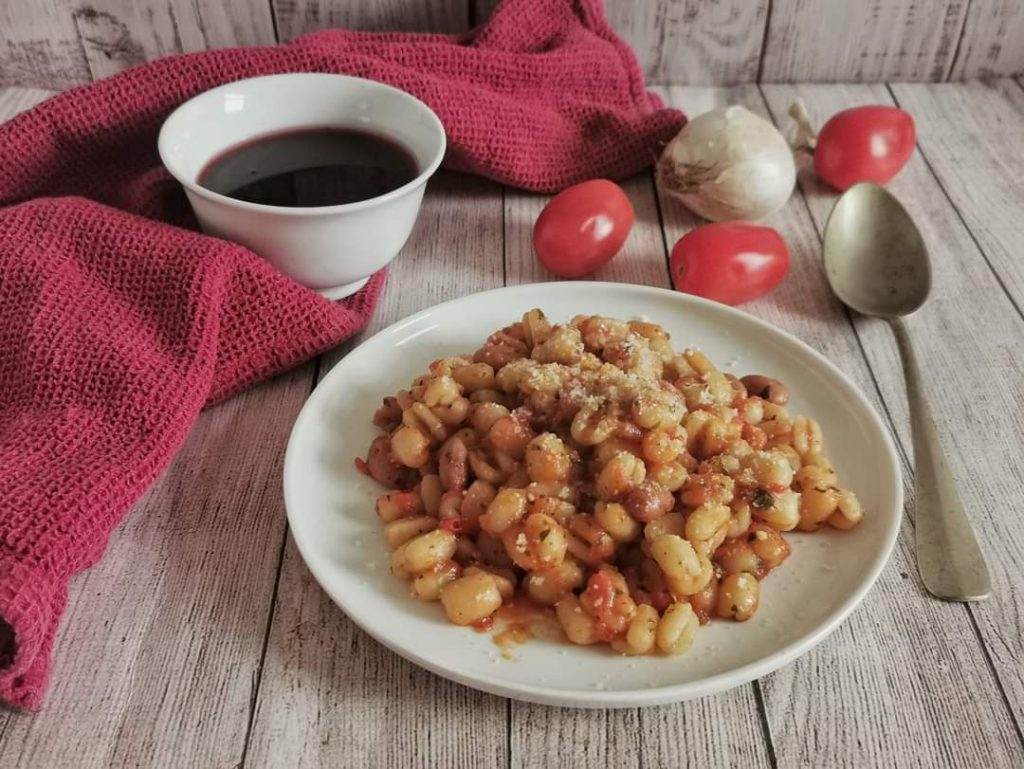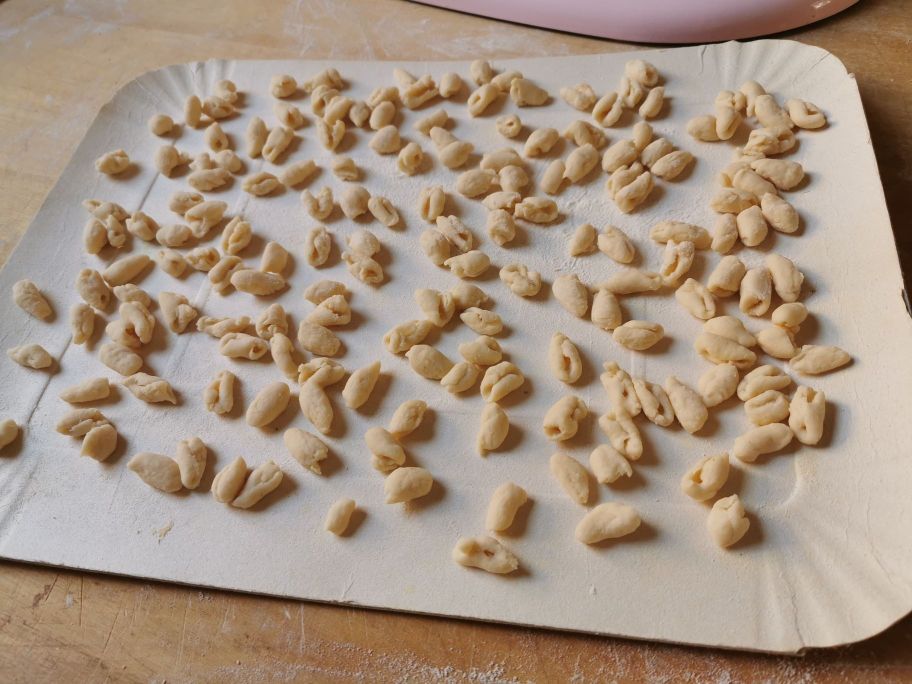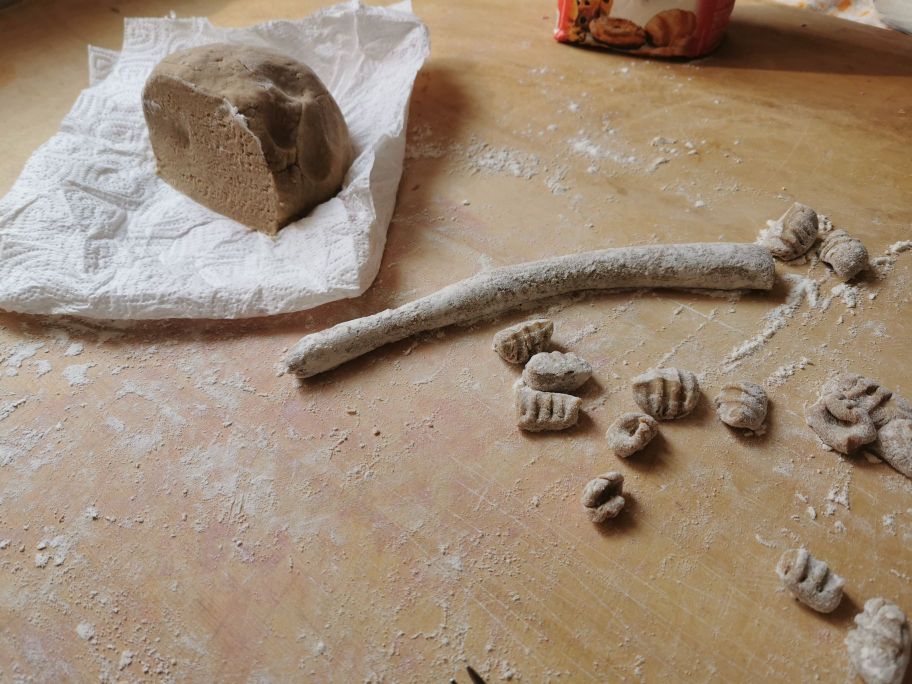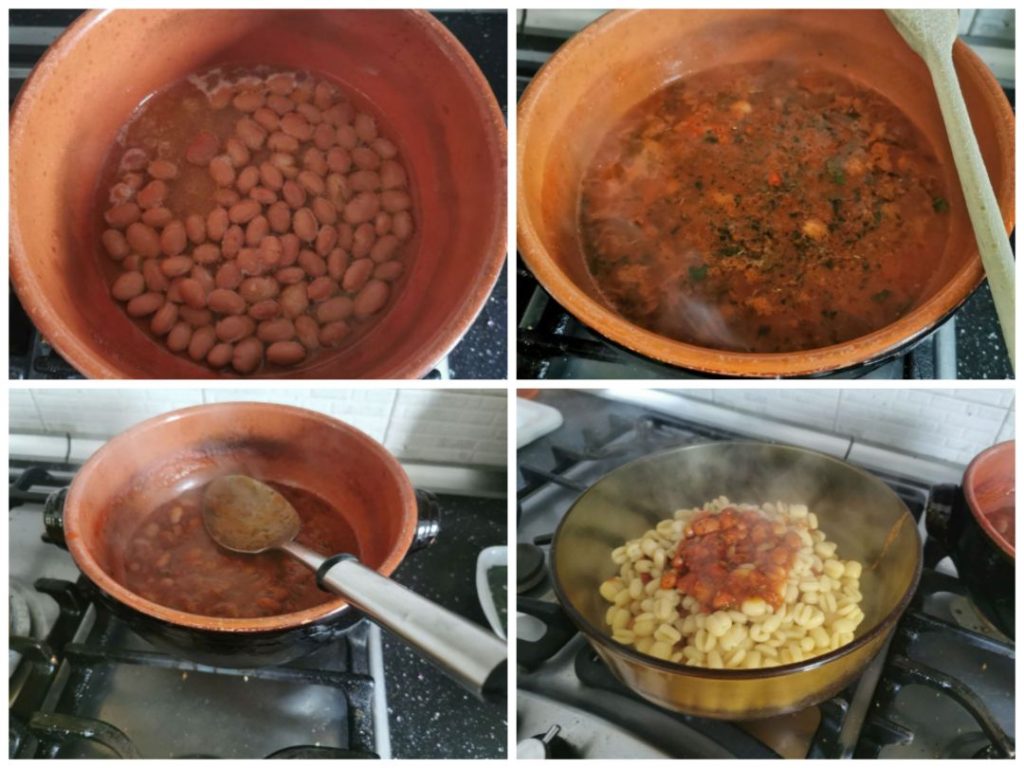Pisaréi e fasò piacentini (Dumplings and Beans) modern version, is a typical dish from Piacenza, an ancient peasant recipe, very tasty, it was a precursor to macrobiotic cuisine. In fact, the combination of cereals and legumes (flour – beans) provided the proteins that could not be obtained from meat, too expensive for the peasants’ means. An interesting fact is that the term Pisarei derives from the dialect term bissa, referring to the snake of dough to be formed and cut into small pieces before obtaining the dumplings. The modern version of Pisarei differs from the ancient traditional version, where pork rind was used in the sauce, black-eyed peas, without tomato, and decidedly less dry, almost brothy. I intend to publish the traditional recipe, to give it the right importance, and to be able to compare it with the modern version. Meanwhile, enjoy this one….

- Difficulty: Medium
- Cost: Very cheap
- Preparation time: 30 Minutes
- Portions: 4/6 people
- Cooking methods: Stove
- Cuisine: Italian
- Energy 871.27 (Kcal)
- Carbohydrates 130.50 (g) of which sugars 4.87 (g)
- Proteins 23.46 (g)
- Fat 30.12 (g) of which saturated 11.98 (g)of which unsaturated 16.81 (g)
- Fibers 9.63 (g)
- Sodium 2,364.40 (mg)
Indicative values for a portion of 152 g processed in an automated way starting from the nutritional information available on the CREA* and FoodData Central** databases. It is not food and / or nutritional advice.
* CREATES Food and Nutrition Research Center: https://www.crea.gov.it/alimenti-e-nutrizione https://www.alimentinutrizione.it ** U.S. Department of Agriculture, Agricultural Research Service. FoodData Central, 2019. https://fdc.nal.usda.gov
pisaréi e fasò piacentini (dumplings and beans) modern version
- 4 cups all-purpose flour
- 1 1/2 cups breadcrumbs
- to taste water
- to taste salt
- 3 tbsp butter
- 2 1/2 oz lard
- to taste olive oil
- 1 onion
- 10 oz borlotti beans
- 7 fl oz tomato sauce
- to taste pepper
- to taste Parmigiano Reggiano DOP
- to taste salt
- Clay Pot
- Slotted Spoon
- Pastry Board Pastry Board, Birch Wood 23.6×31.5 inches
On a pastry board, if you are interested in purchasing click here, knead the flour well with water and breadcrumbs (previously scalded in boiling water or milk), until you obtain a soft and elastic dough, form a loaf. At this point, detach pieces of dough that will be thinned with the palm of your hands until they become cords. From these long and thin cylinders, detach small pieces that, slightly pressed with the right thumb, will acquire the hollow shape of dumplings. Let the pisaréi rest and let’s take care of the seasoning.


Previously we would have soaked and boiled three or four hectograms of borlotti beans, bringing them to three-quarters cooked, with unsalted water, but seasoned with a tablespoon of oil and a slice of fresh onion.
Sauté in a clay pot the butter, oil, an onion, and some chopped parsley, a pestle of lard (or a whole piece to be removed at the end of cooking). Add the beans and let them flavor over low heat, add salt and pepper. Add the tomato sauce, dilute if necessary with warm water and continue cooking over very low heat.
When the sauce is ready, cook the pisaréi in plenty of salted boiling water. When they rise to the surface after a few minutes, drain them and pour them along with the sauce and beans into a tureen (if you are interested in purchasing click here), mix with a few handfuls of Parmigiano Reggiano and serve your pisaréi e fasò

you can freeze the pisaréi, they last for 2 or 3 months

